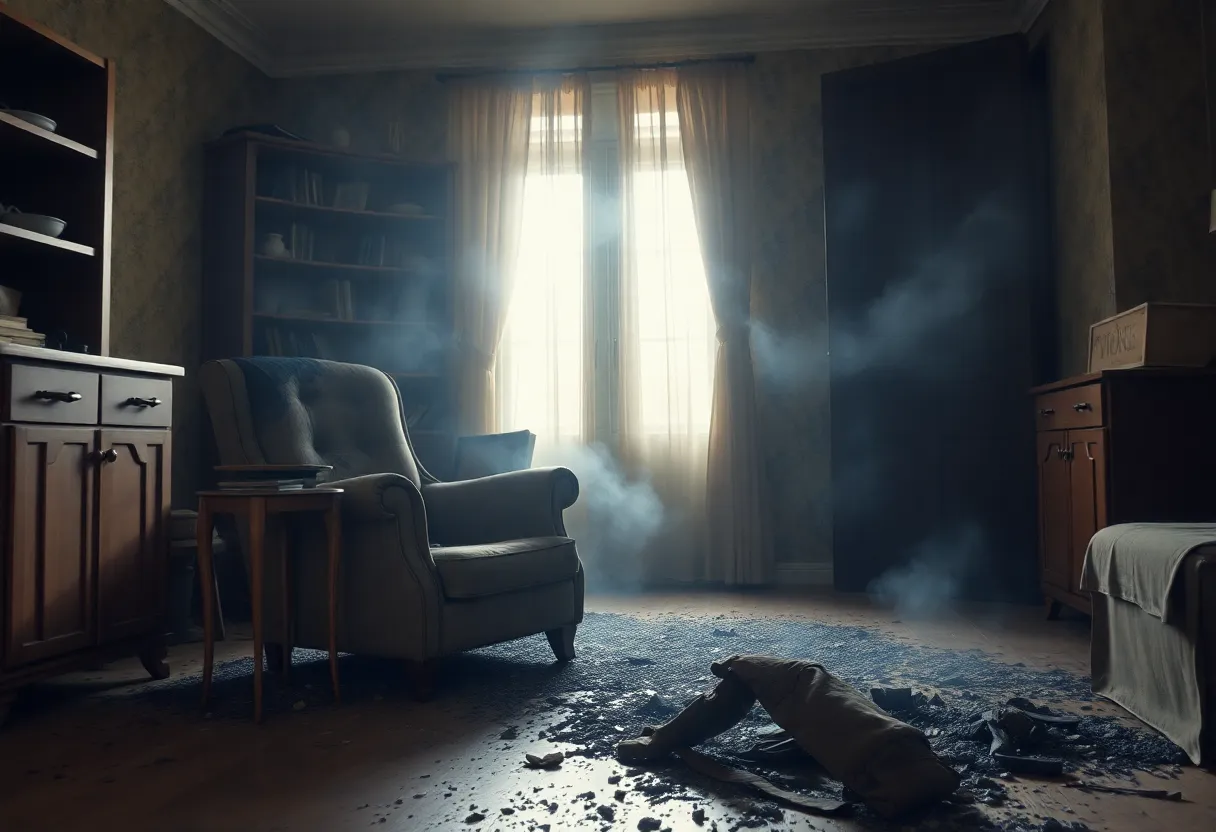News Summary
The death of 67-year-old Mary Hardy Reeser on July 2, 1951, remains a perplexing case in Florida’s history. Found in her burning apartment, investigators explored theories of spontaneous combustion, suicide, and extreme heat. The conditions around her remains defy conventional explanations and sparked public intrigue. Despite numerous theories and investigations, the mystery persists, marking Reeser’s death as an enduring enigma in forensic science.
St. Petersburg, Florida – The bizarre and tragic death of Mary Hardy Reeser on July 2, 1951, remains one of the most puzzling incidents in Florida’s history. The 67-year-old widow was discovered in her apartment in a state that led investigators to explore various theories surrounding spontaneous combustion, suicide, and unexplained heat-induced deaths.
Reeser was last seen alive the evening before her death after a visit from her son. Upset about needing to cancel a planned trip, she had taken two sleeping pills and was preparing for bed when the incident occurred. She was found in her living room, dressed in a large nightgown and sitting in her easy chair, which was entirely burnt, leaving only the chair’s springs intact. The surrounding apartment was filled with smoke, and the door handle was so hot that the landlady could not touch it.
Upon forced entry into Reeser’s apartment, firefighters encountered significant damage. Among the findings were remnants of Reeser’s remains, primarily ashes, with only a left foot still in a slipper, a scrap of backbone, and a skull that had reportedly shrunk to the size of a cup. In addition, melted human fat was found on the carpet, marking an extraordinary scene that defied conventional explanations for house fires.
The investigation revealed that extreme heat had occurred in the apartment, indicated by the damaged ceilings and blackened drapes, but much of the room remained untouched by flames. Light switches positioned higher in the room melted, while those closer to the floor remained intact, while newspapers near the water heater showed no signs of distress. The only evidence of potential electrical fault was a burnt-out fuse in the water heater, leading investigators to be puzzled over the cause of such isolated destruction.
As the investigation progressed, numerous theories emerged to explain Reeser’s death. Some suggested that suicide could have played a role, while others included more sensational explanations like spontaneous human combustion or lightning strikes. Over 100 letters with varying theories were sent to the police department, evidencing the public’s intrigue and bewilderment over the event.
The prevailing theory among experts suggested that Reeser’s cigarette may have ignited her nightgown, leading to her tragic end. It was noted that fires capable of disintegrating human bones require temperatures around 3,000 degrees Fahrenheit, significantly higher than typical fire temperatures. This brought further complexity to the investigation, as such high temperatures would generally incinerate not only the remains but also cause extensive damage to the surrounding area.
In 1987, researchers Joe Nickell and John Fischer advanced a new theory to explain the unusual circumstances. They theorized that the slow burning of the stuffing in Reeser’s chair, fueled by melted body fat, could account for the destruction without extensive fire damage to the nearby area. The concrete flooring of the room likely prevented the fire from spreading too extensively.
Despite thorough examinations, some aspects of the case remained enigmatic. Certain details, such as the appearance of Reeser’s skull, were initially perceived as evidence of unusual circumstances. Experts later clarified that the skull likely ruptured during the fire rather than shrinking, challenging early narratives. Additionally, the location of Reeser’s left foot outside the area of intensive burns was explained by the position of her legs, which stiffened while she was seated.
The mystery surrounding Mary Hardy Reeser’s unusual death continues to be a point of fascination and investigation. The family reported feeling her presence in their home until they disposed of her furniture, adding an emotional layer to the unsolved case. As more theories emerge and research continues, the circumstances of her death remain a compelling enigma steeped in scientific inquiry and public intrigue.
Deeper Dive: News & Info About This Topic
HERE Resources
Additional Resources
- Fox 13 News: One-Year-Old Found Dead in Hot Car
- Wikipedia: St. Petersburg, Florida
- People: Toddler Dies After Dad Forgets to Drop Him at Daycare
- Encyclopedia Britannica: Florida
- ABC Action News: One Person Killed in St. Pete House Fire
- Google News: St. Petersburg Florida

Author: STAFF HERE PETERSBURG WRITER
The ST PETERSBURG STAFF WRITER represents the experienced team at HEREStPetersburg.com, your go-to source for actionable local news and information in St Petersburg, Pinellas County, and beyond. Specializing in "news you can use," we cover essential topics like product reviews for personal and business needs, local business directories, politics, real estate trends, neighborhood insights, and state news affecting the area—with deep expertise drawn from years of dedicated reporting and strong community input, including local press releases and business updates. We deliver top reporting on high-value events such as Grand Prix of St. Petersburg, Localtopia, and SHINE Mural Festival. Our coverage extends to key organizations like the St. Petersburg Area Chamber of Commerce and St. Pete Downtown Partnership, plus leading businesses in finance, manufacturing, and healthcare that power the local economy such as Raymond James Financial, Jabil, and Bayfront Health St. Petersburg. As part of the broader HERE network, including HEREJacksonville.com, HEREOrlando.com, HERETallahassee.com, and HERETampa.com, we provide comprehensive, credible insights into Florida's dynamic landscape.





